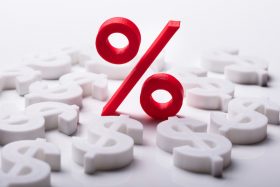

While inflation never materialized after the last financial crisis and the subsequent economic expansion, this time will be different, said Erik Weisman, portfolio manager and chief economist at MFS Investment Management, when speaking at the Canadian Investment Review’s Investment Innovation Conference in November.
After the global financial crisis, quantitative easing didn’t generate inflation because the money never made its way into the system. “All the [Federal Reserve] was doing was offsetting bank deleveraging, household deleveraging, and starting in 2010 and 2011 — government deleveraging, where governments began to implement austerity on the fiscal side,” Weisman said. “The multiplier for the Fed was actually very low. You print a bunch of money, very little gets out. The multiplier from the banking system was very significant. You take a dollar out of the system and you really wind up taking two, three [or] four dollars out of circulation as a result of leverage. So that’s one reason we didn’t get inflation last time around.”
With the current coronavirus crisis, the Federal Reserve’s focus is different and it’s generating money directly for households and corporations. “That money should be able to get into the system a lot more easily this time around, unless we see bank deleveraging.”
That said, the coronavirus crisis has created negative supply and demand shocks. “But we believe that, in our current state, demand has been hit a lot more than supply,” Weisman noted.
Prices of more goods and services have declined than have risen. Overall, the current forces have led to disinflation and created a large negative output gap. “An output gap, when it is negative, is characterized by high levels of unemployment, so idle labour, and low levels of capacity utilization in the production of things.”
Historically, when a large negative output gap has opened, the inflation rate has declined, Weisman noted.
Post-coronavirus crisis, fiscal policy-makers will likely implement measures similar to modern monetary theory, Weisman said. “We may raise taxes in the U.S. in the aftermath of this election, but we’re going to raise spending a lot more and it looks like we will be very patient, trying to make sure that we close that negative output gap.”
The economy is at a fork in the road, Weisman noted, citing headwinds to inflation including demographics, large levels of debt and digitalization. “But now [these secularly disinflationary trends] may be meeting a more powerful force: the combination of quantitative easing with [eventual] modern monetary theory, long-lasting debt monetization, higher velocity of money, higher money multipliers, perhaps loosening that inflationary anchor to some degree, and maybe de-globalization.”
Overall, Weisman expects to see inflation of 2.5 to three per cent in about three to five years in the next business cycle. “It’s not going to happen in the next few years because the output gap is negative.”
